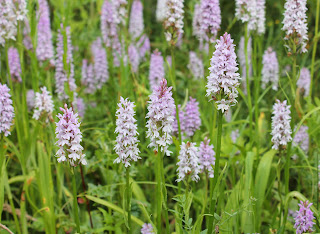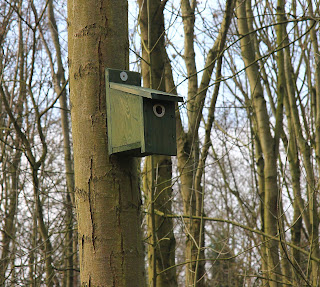

I woke to a beautiful spring morning today (Tuesday, 22nd March) so decided to go for a walk on Ivy Green and Chorlton Ees to see what I could see. This year the month of February felt like the longest February of my life (probably as a result of the harsh winter) and early March was like more of the same. So, to be out on a proper spring morning felt wonderful! True, we’ve had some ‘spring-ish’ days in the last week or so – but today felt like the real thing at last!
I spotted the following flowers, mainly along the banks of Chorlton Brook: Barren Strawberry, Lesser Celandine, Butterbur, Opposite-leaved Golden Saxifrage, Dandelions, Coltsfoot and Wavy Bittercress. Sections of the banks of Chorlton Brook were clothed in the fresh green leaves of Bistort. I had thought that this highly characteristic plant of this area was in decline, but since FoCM have made a concerted effort to remove Himalayan Balsam from the banks of the brook, in late summer, the Bistort seems to have taken on a new lease of life. It’s possible that the accumulated dead stalks of the Balsam had been inhibiting the Bistort from sprouting in the spring.
Virtually all of the local Willow trees were smothered in catkins. Willows are ‘dioecious’ with male and female catkins on separate trees. You can easily tell the difference between the two sexes as males have pollen bearing catkins, like yellow ‘bottle-brushes’ whilst female catkins are less ‘fuzzy’ and ‘flamboyant’ and are a fairly uniform green. Cherry Plum (
Prunus cerasifera), with its gorgeous display of snowy-white flowers has been in flower for at least a week whilst its smaller, commoner relative, Blackthorn (
Prunus spinosa) is only just opening its smaller, but equally snowy-white, flowers (see top photograph above).
As I walked along a path towards the river I stopped to watch two Toads, one tightly clasping the other, slowly making their way across the path towards the taller vegetation at the side (see bottom photograph). Not to put too fine a point on it, these two Toads were mating. The smaller one was the male who was clasping the larger female in ‘amplexus’ (the technical term for it, I believe). They were probably making their way towards one of the ponds on Chorlton Ees where, having been ... ahem! ... impregnated, the female would lay her eggs. I suspect that these two were stragglers – and if I’d been in the same spot several hours earlier I might have seen many more.
As I moved on I heard a shrill ‘peee-oww!’ cry above my head. Circling above me was a Buzzard and there was another in a tree on the edge of a large open space near the river. I think that the circling, calling bird was the male whilst the one in the tree was the female (any ornithologists out there should not hesitate to correct me if I’m wrong). The male (if it was the male) was very distinctive with a sort of ‘notch’ in its wing (almost certainly the result of a missing feather or feathers). I have seen these birds before and think that they are probably nesting on the Ees – which is an interesting development. They are another addition to our local biodiversity, along with the Herons that, in recent years, have established a thriving heronry in one of the old, fenced off sewage beds near the river.
Several Bumble Bees buzzed among the dry foliage of last year and the new green shoots of this year. I think that they might have been queens looking for suitable nesting sites (again, if you know different, please feel free to correct me if I’m wrong). I also spotted three different species of Butterfly: Peacock, Brimstone and Comma. At one pointed I watched, what appeared to be, an aggressive Comma chasing a Brimstone away from its territory.
In the course of my walk I had a look of the sites of our two (relatively) rare ferns: Adderstongue and Narrow Buckler Fern. With some help from the Warden Service, FoCM have been working to improve the habitats of these two ferns. When they finally emerge above ground, in a couple of months, we will be monitoring them and starting an on-going record which will, hopefully, help us to conserve them.
Dave Bishop, March 2011









